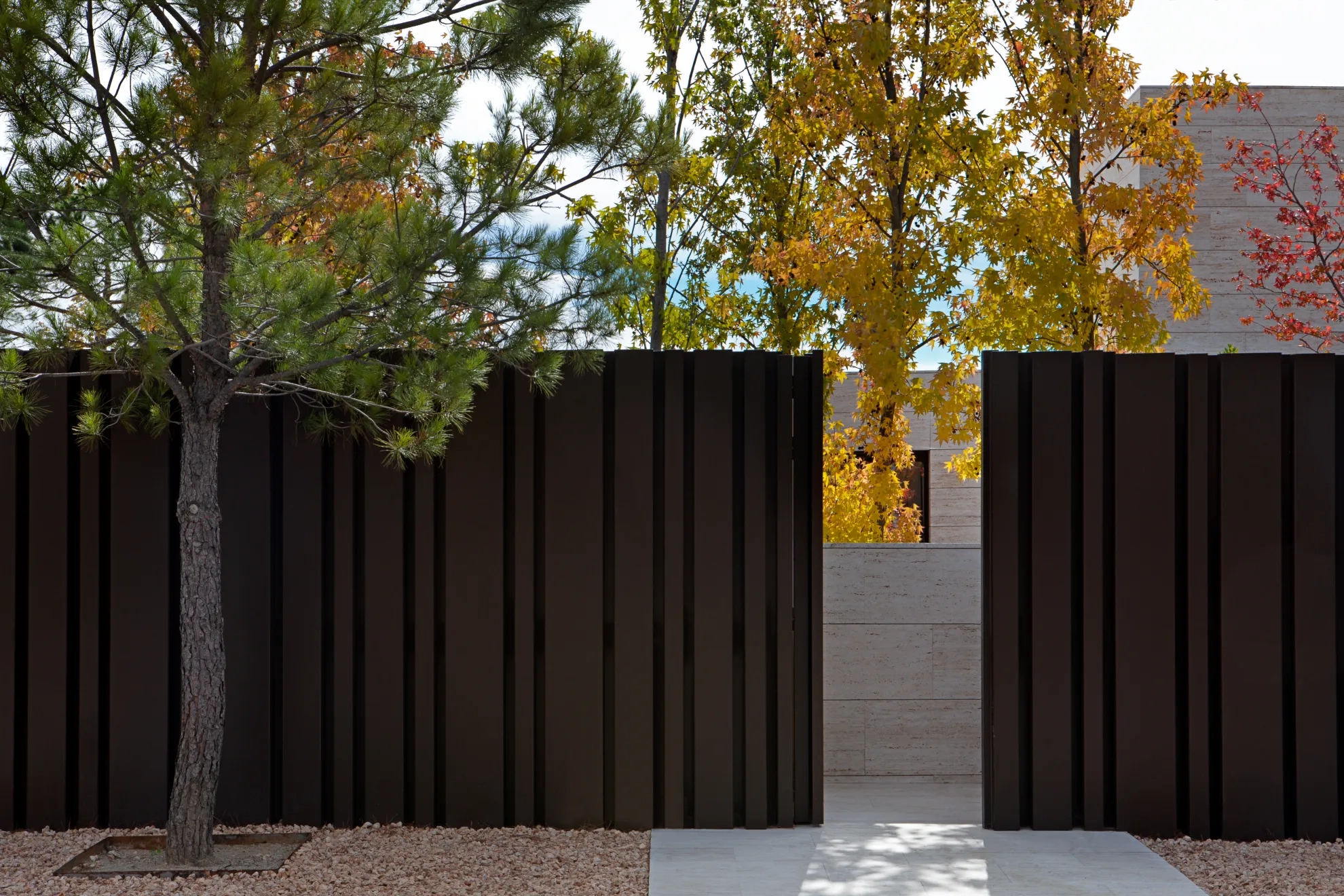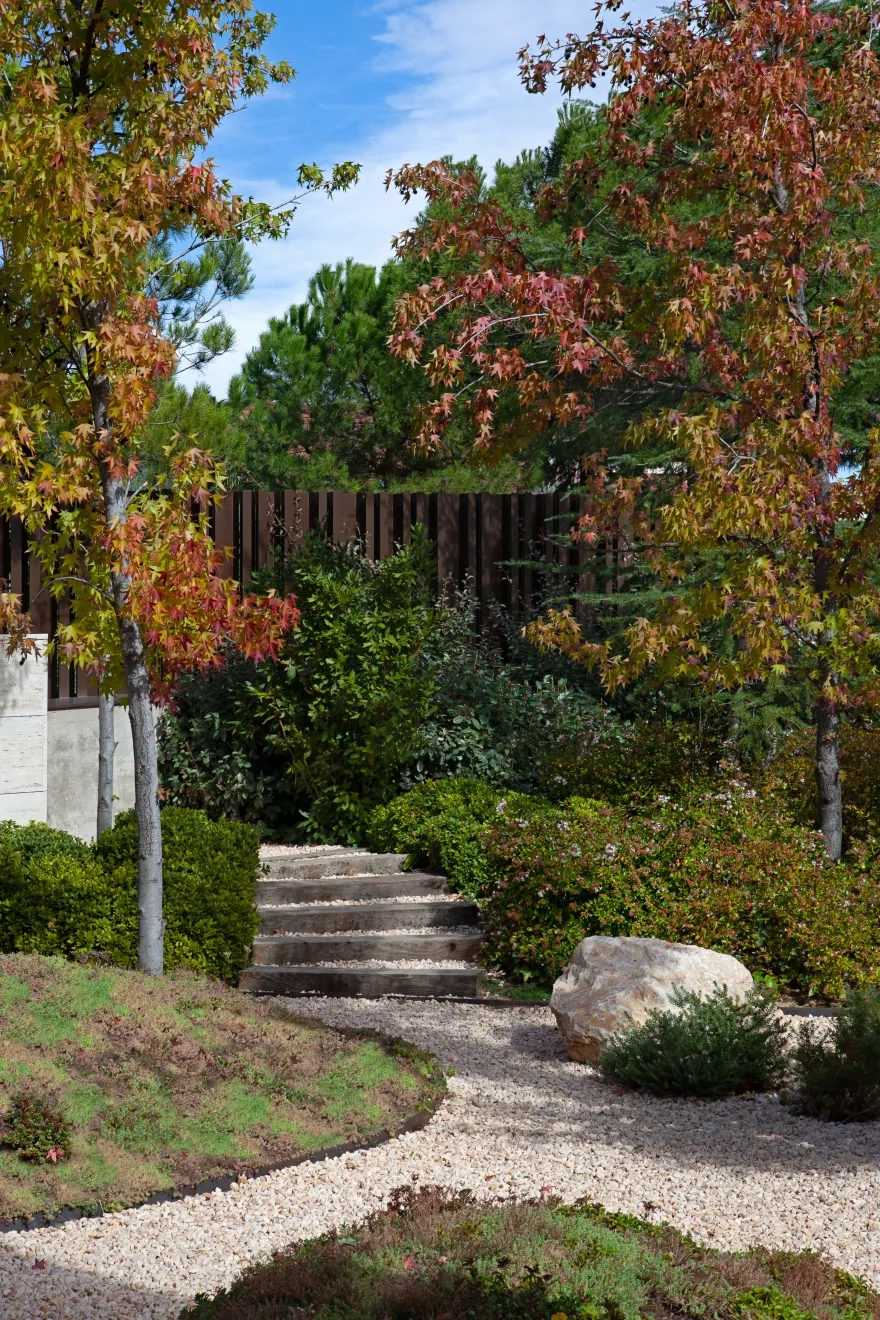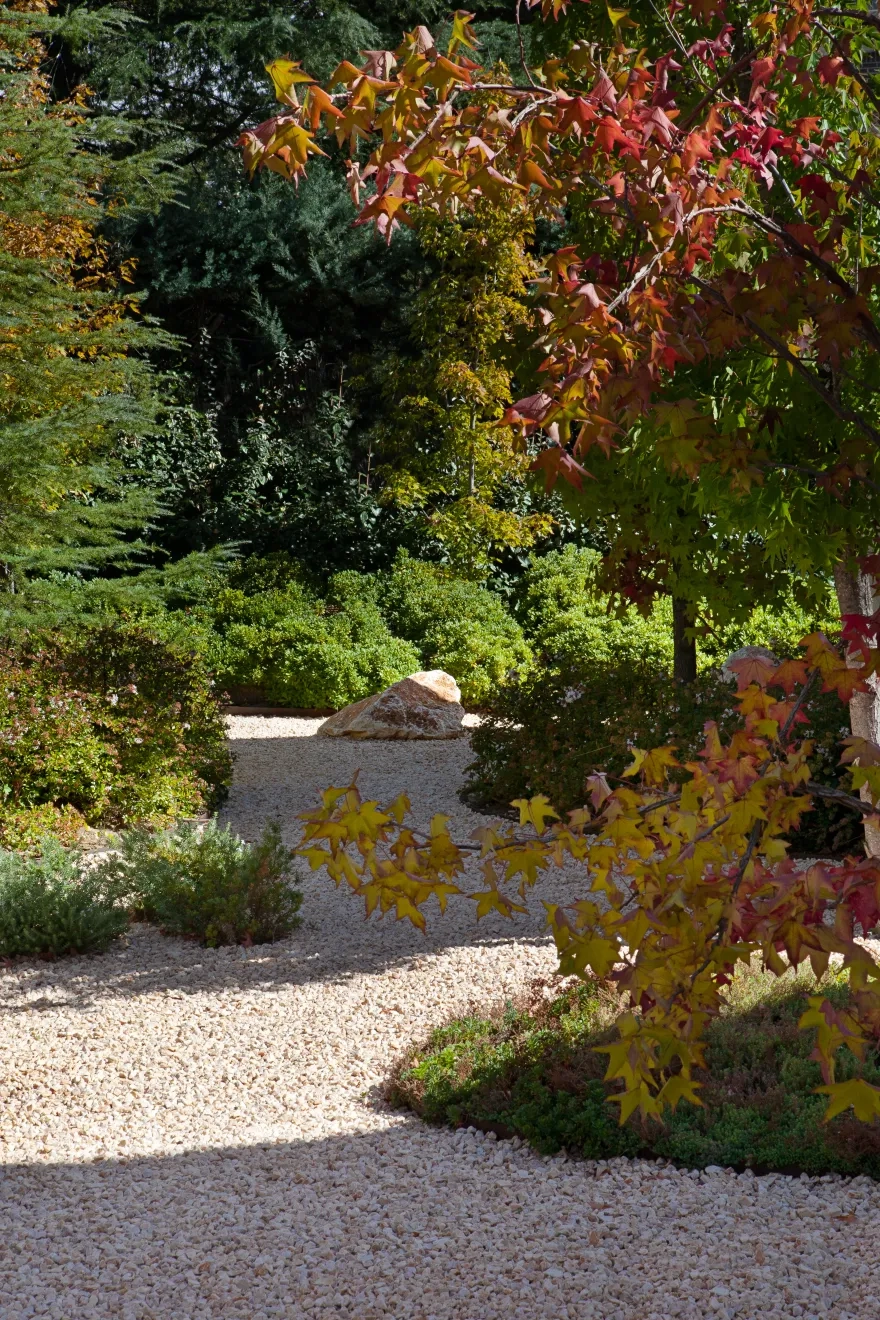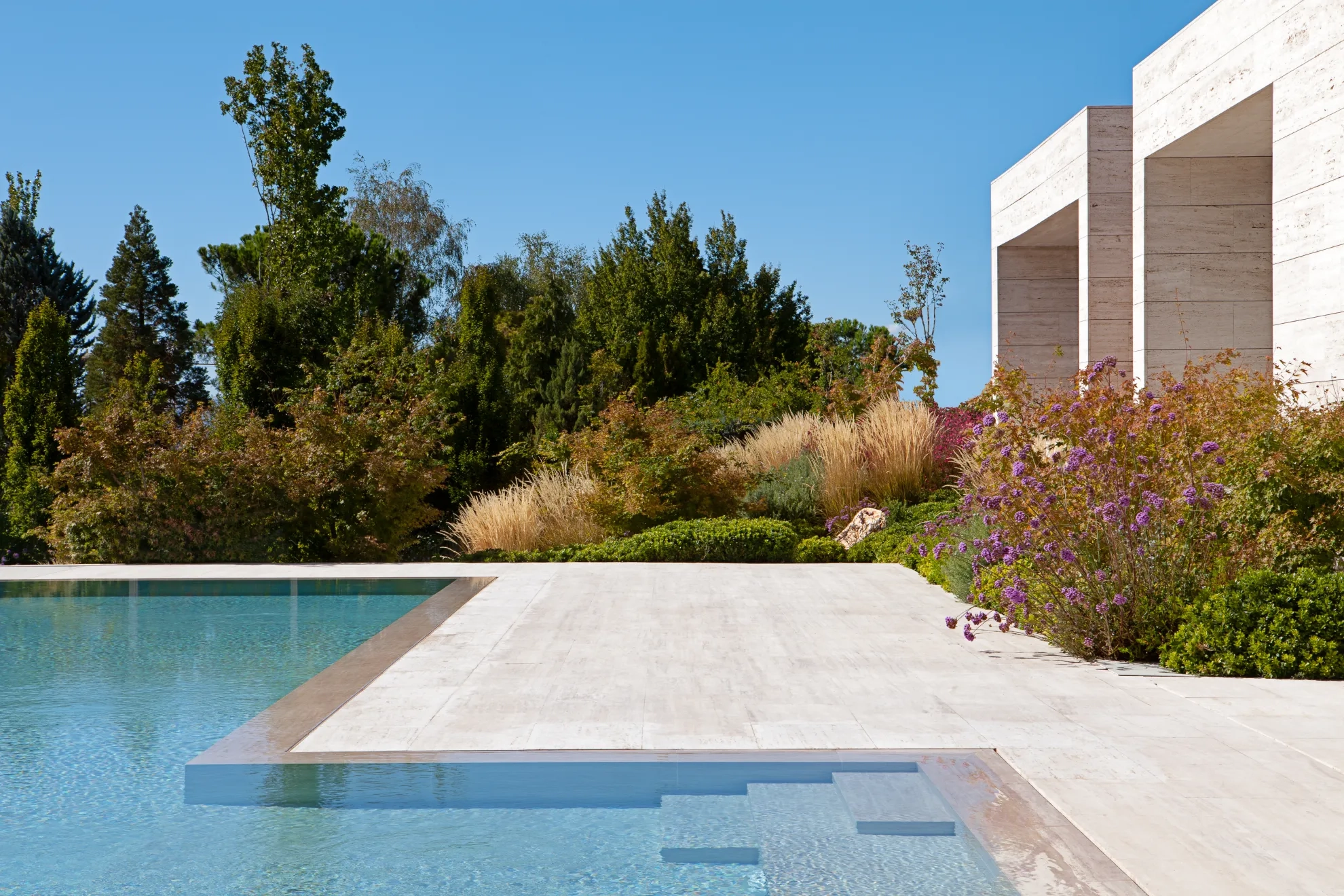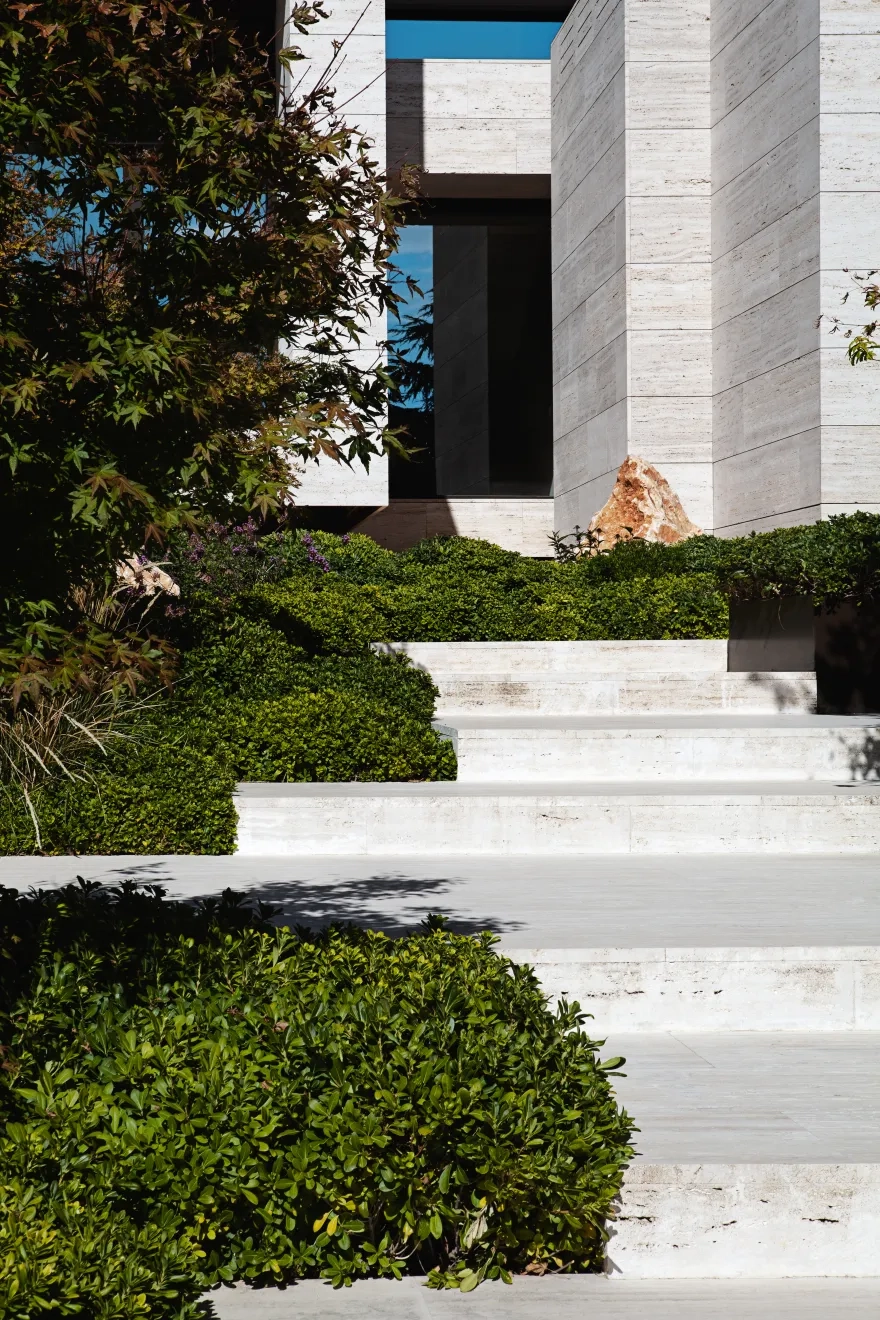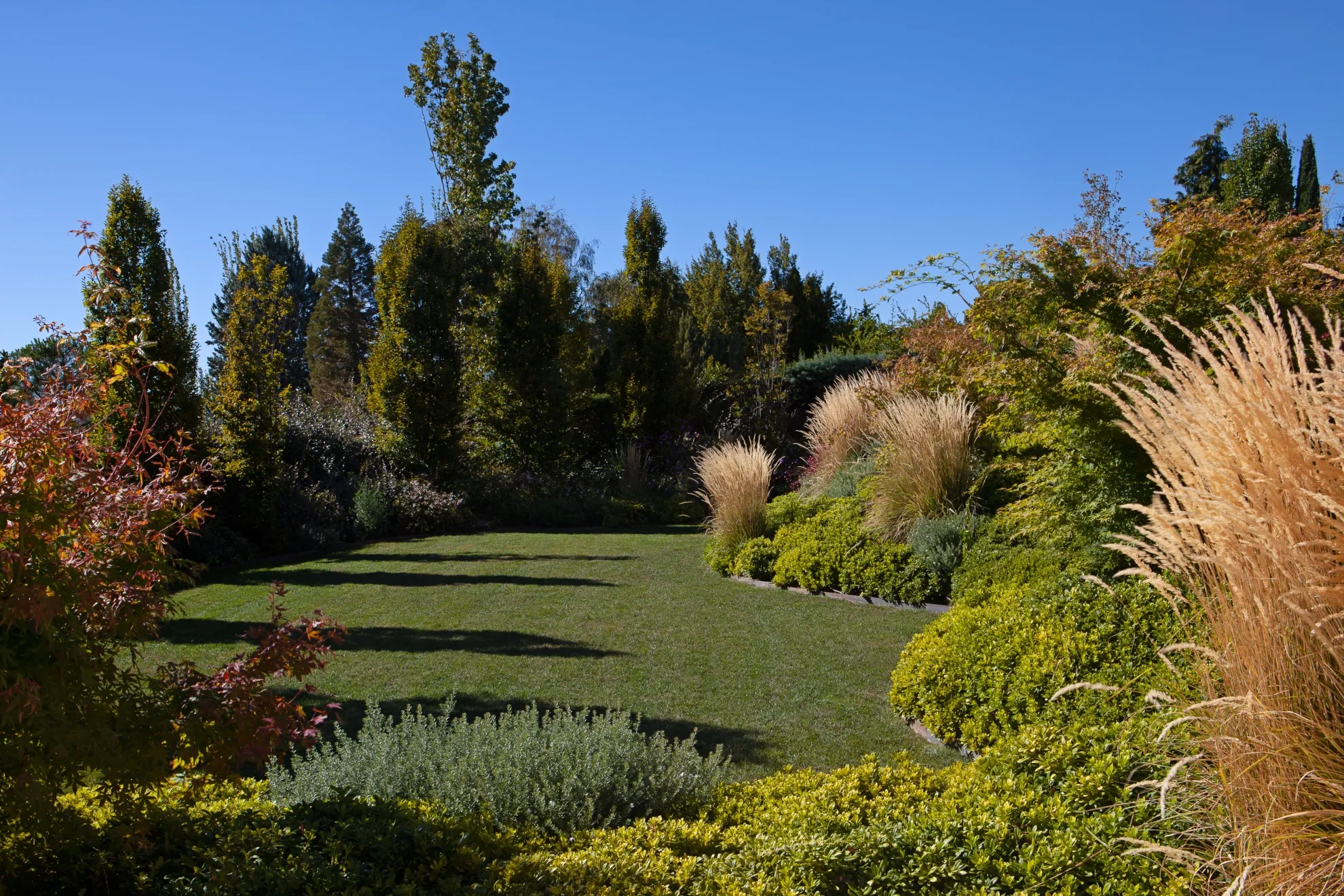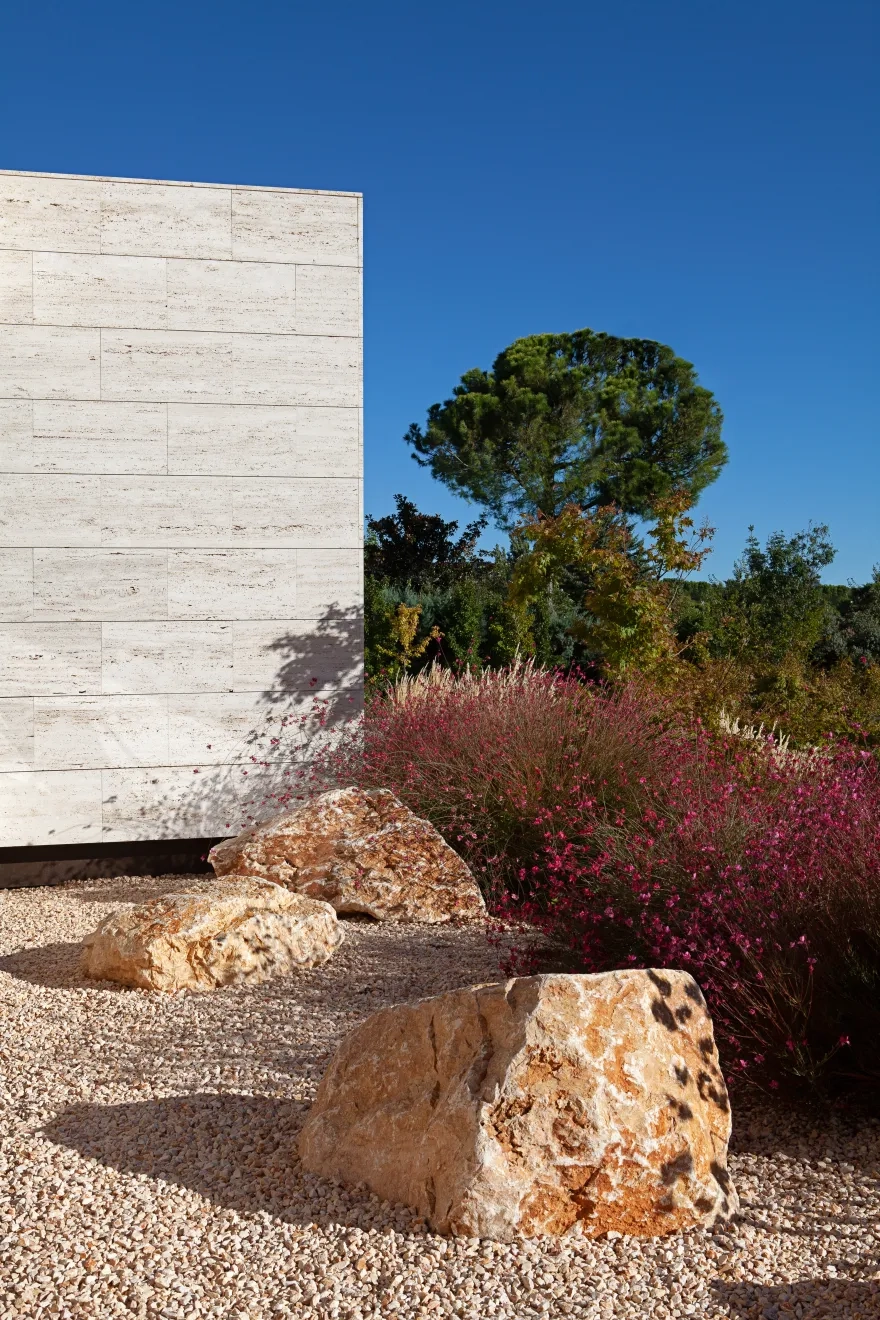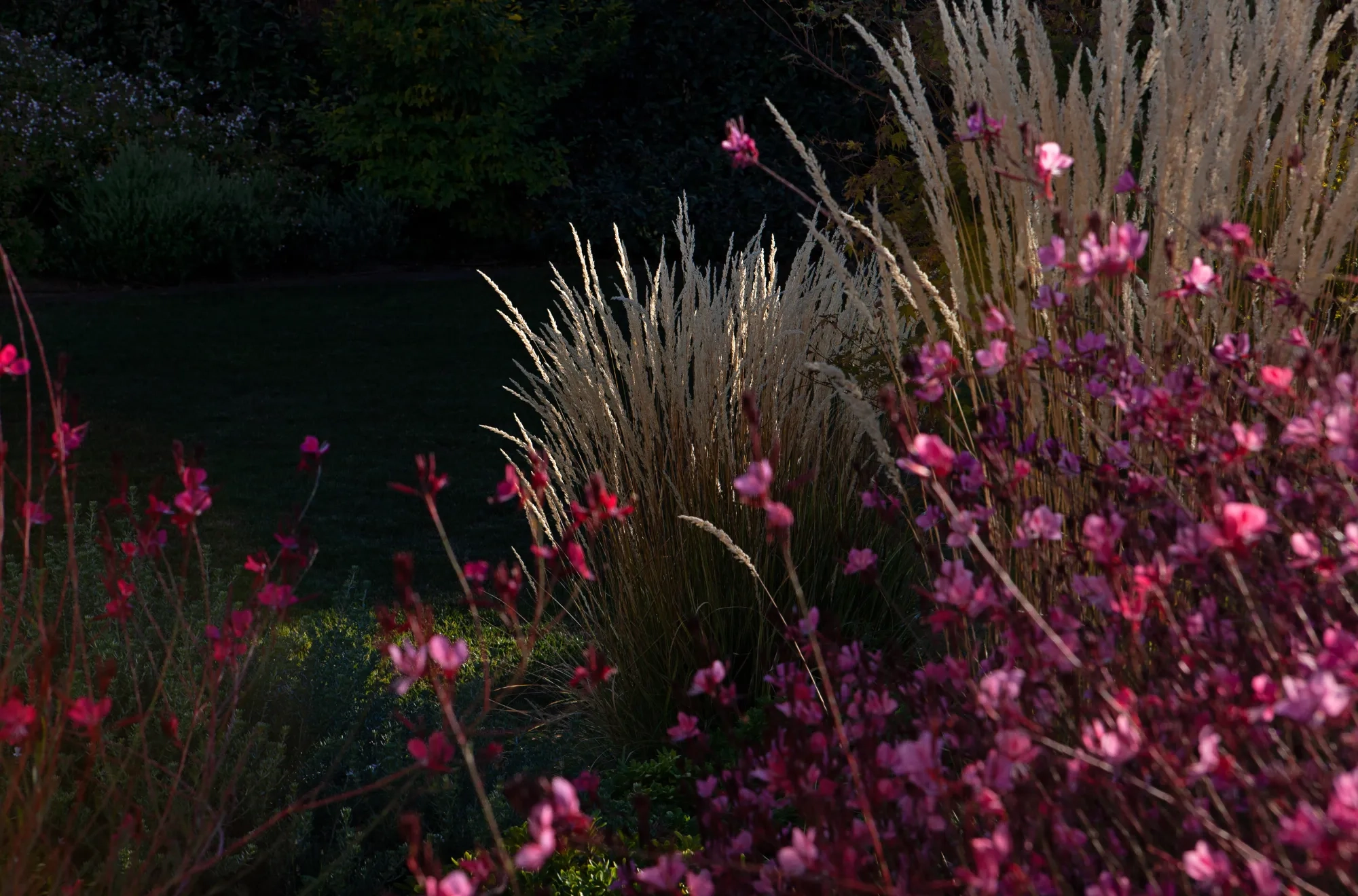Architecture, garden, and gravity.
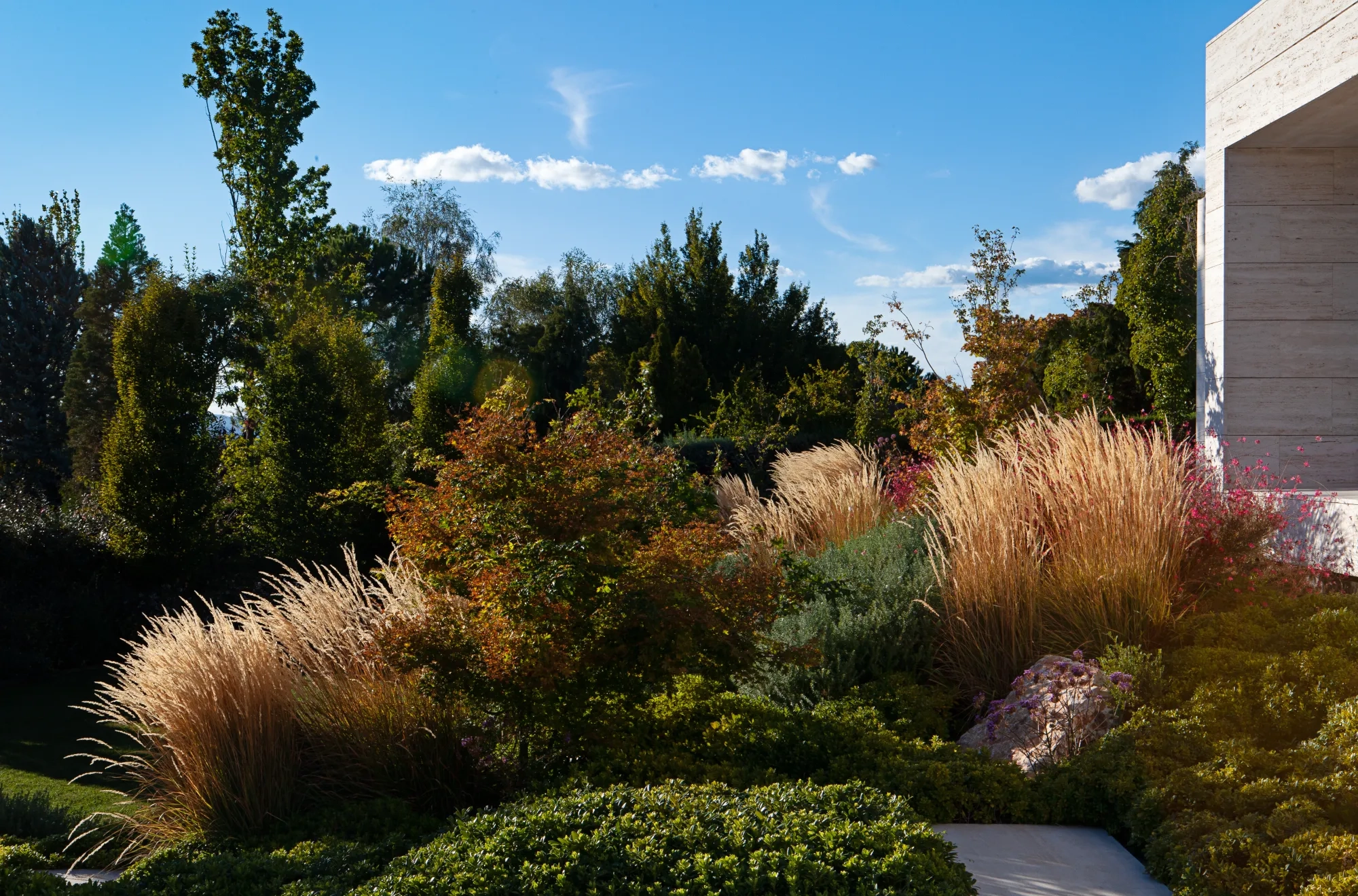
Date
2016-2020
Location
Madrid (España)
Type
Residential
Trees
67
Area
3.500 m2
Status
Built
Since ancient times, architects have worked with light to generate effects and emotions both inside and outside buildings. In this regard, the garden has always been a privileged place to explore these relationships, as nature and light are fundamental elements in its design. In contemporary architecture, the relationship between space, light, and gravity has made it possible to explore new forms and materials. In this project, our studio has developed a garden based on all these concepts.
ABOUT LIGHT AND MOVEMENT
The relationship between architecture and nature has been the subject of reflection by numerous landscape architects and architects. During the research process prior to design, the home's light entries and their evolution throughout different seasons and times of the day were analyzed. Through the design of our garden, we are capable of controlling the effect of this light on the building and its inhabitants, emphasizing the relationship between the various volumes and the exterior.
The choice of plant species has also been studied from the perspective of movement to break the rigidity of the building and generate dynamism in the garden. The proposal to include flexible plant species (Calamagrostis x acutiflora "Karl Foerster") that sway with the breeze, on a compact green base (Pittosporum tobira 'nana'), creates a sensation of natural and fluid movement that accommodates the building's impact on the environment.
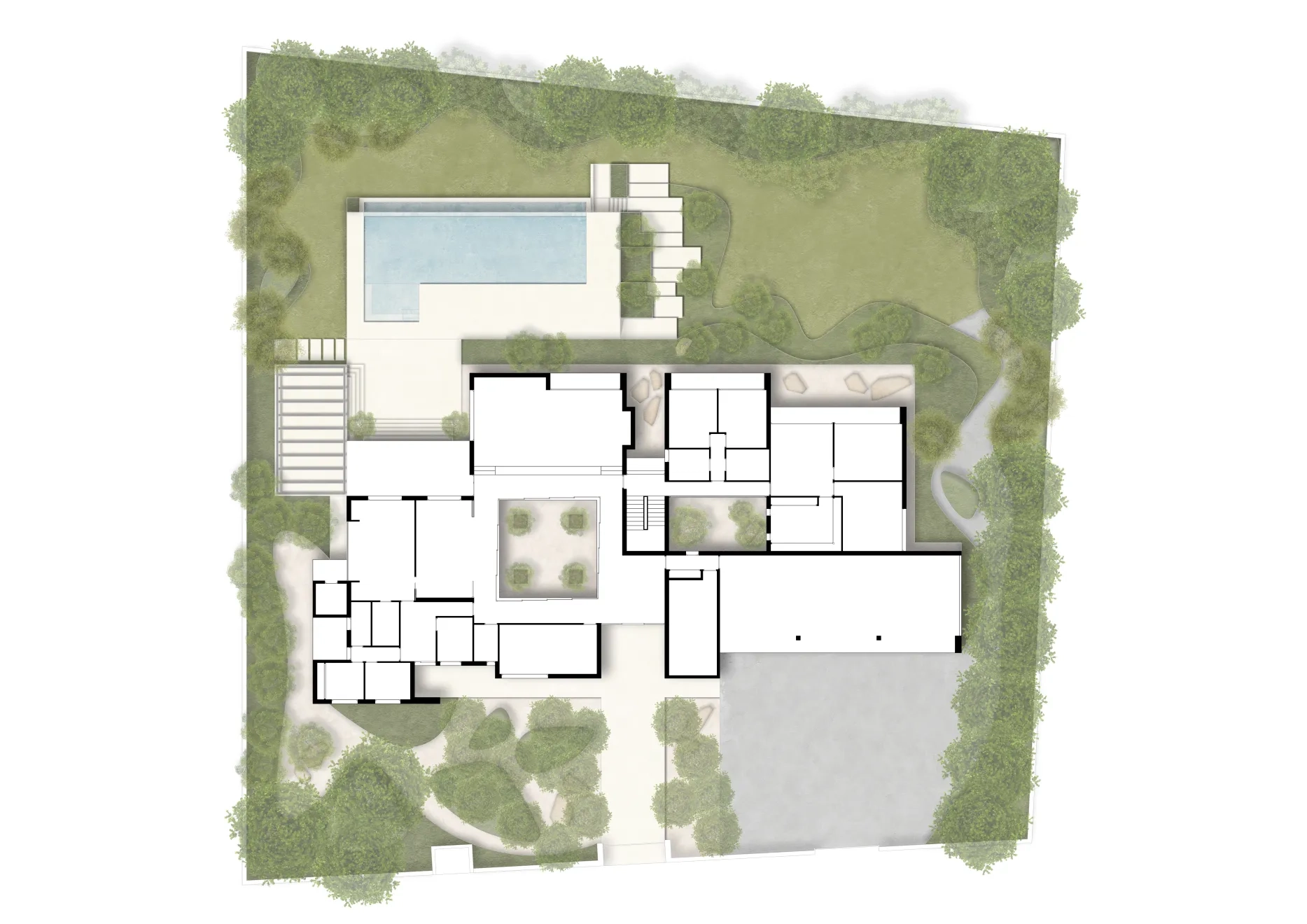
FEELING OF WEIGHTLESSNESS
Faced with the monumentality of the building, which seemed to saturate the space of the plot, we suggested suspending the construction thirty centimeters above the garden ground. This decision, intertwining aesthetic and conceptual elements, transformed a massive structure into one that appears suspended, alleviating the feeling of oppression and fostering a new dialogue between the building and its surroundings. This act of architectural levitation becomes the cornerstone of our design, redefining the user's experience in this space.
The perimeter gravel border surrounding the building also contributes to generating this sensation. The gravel evokes a sense of solidity and stability, which contrasts with the image of the building floating above the garden.
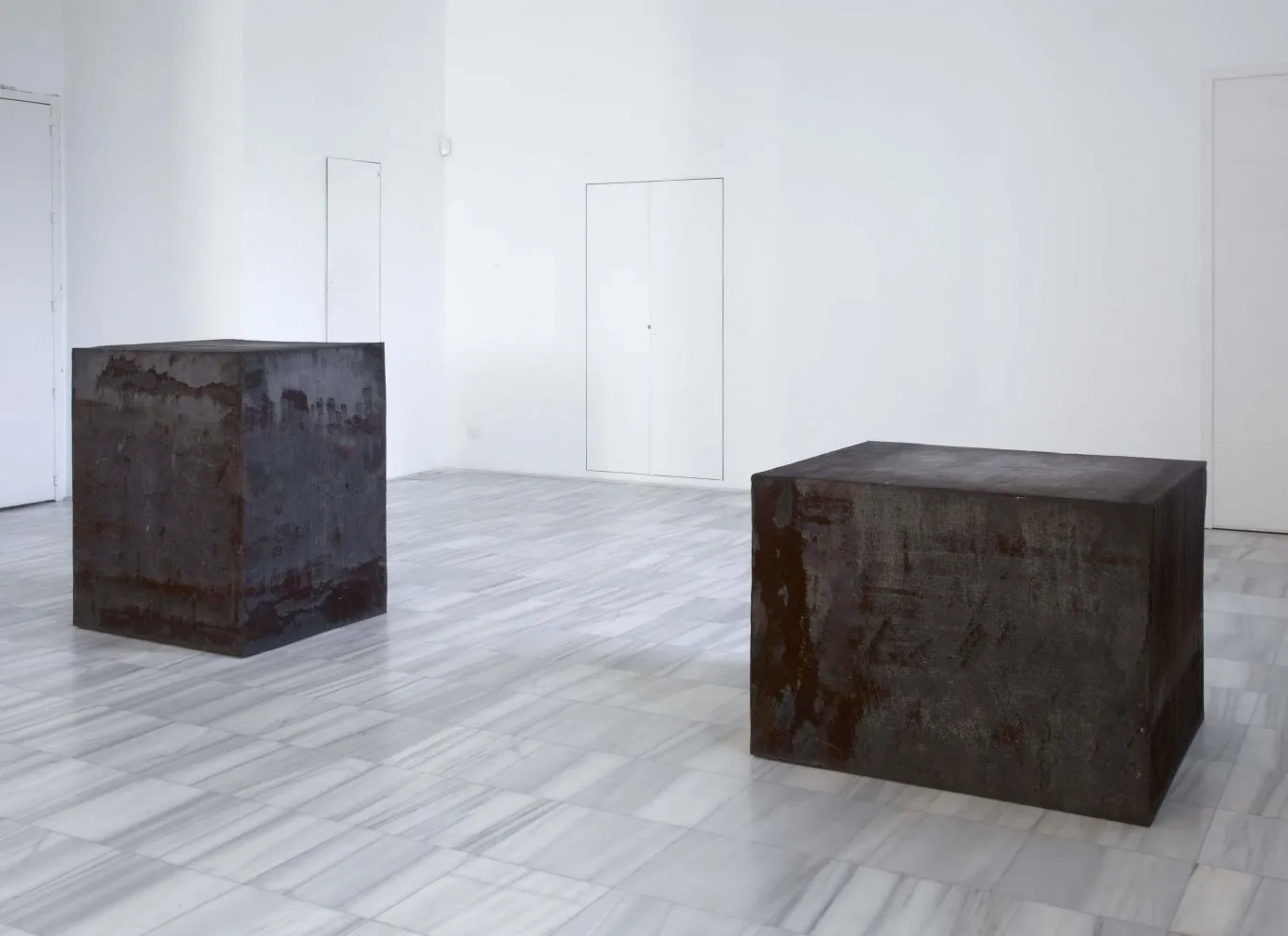
|
ABOUT RICHARD SERRA Richard Serra considers gravity not only as a physical force but as a sculptural medium, inviting meditation on permanence and transience. His works, anchored in a moment and place, prompt us to reflect on our relationship with space. Gravity, for Serra, is both a technical challenge and a philosophical concept. As we walk around and through his works, we become conscious of our own existence, experiencing firsthand the tension exerted by his sculptures.
|
